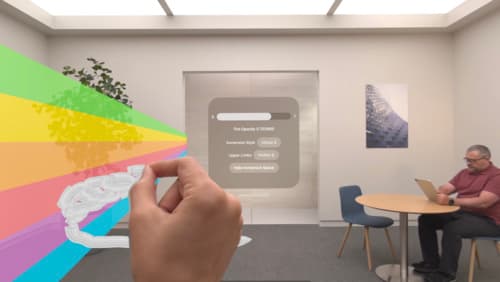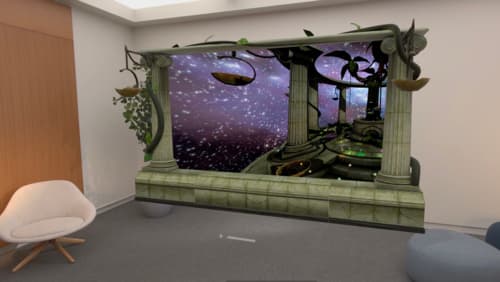How do I render with transparent background using metal on vision pro?
Asked on 2024-08-02
1 search
To render with a transparent background using Metal on Vision Pro, you can follow the steps outlined in the session "Render Metal with passthrough in visionOS" from WWDC 2024. Here are the key points:
-
Clear Drawable Texture: Ensure you clear your drawable texture to the correct value. This value will differ from what you might use in a full immersion style.
-
Rendering Pipeline: Make sure your rendering pipeline produces correct color and depth values. VisionOS expects pre-multiplied alpha and P3 color space.
-
Scene Understanding: Use ARKit to anchor your rendered content in the real world and perform physics simulations.
-
Compositor Services: Utilize compositor services to create a rendering session. VisionOS uses the pre-multiply alpha color convention, meaning you should multiply the color channel in your shaders by the alpha value before passing it to compositor services.
-
Color and Depth Textures: Compositor services use both color and depth textures from the renderer for compositing operations. Ensure the depth texture is in reverse Z convention.
For more detailed steps and code examples, you can refer to the session Render Metal with passthrough in visionOS (00:01:55).
Relevant Sessions
These sessions provide comprehensive guidance on rendering with Metal on VisionOS, including handling transparency and integrating with ARKit and compositor services.

Render Metal with passthrough in visionOS
Get ready to extend your Metal experiences for visionOS. Learn best practices for integrating your rendered content with people’s physical environments with passthrough. Find out how to position rendered content to match the physical world, reduce latency with trackable anchor prediction, and more.

Bring your iOS or iPadOS game to visionOS
Discover how to transform your iOS or iPadOS game into a uniquely visionOS experience. Increase the immersion (and fun factor!) with a 3D frame or an immersive background. And invite players further into your world by adding depth to the window with stereoscopy or head tracking.

Port advanced games to Apple platforms
Discover how simple it can be to reach players on Apple platforms worldwide. We’ll show you how to evaluate your Windows executable on Apple silicon, start your game port with code samples, convert your shader code to Metal, and bring your game to Mac, iPhone, and iPad. Explore enhanced Metal tools that understand HLSL shaders to validate, debug, and profile your ported shaders on Metal.
